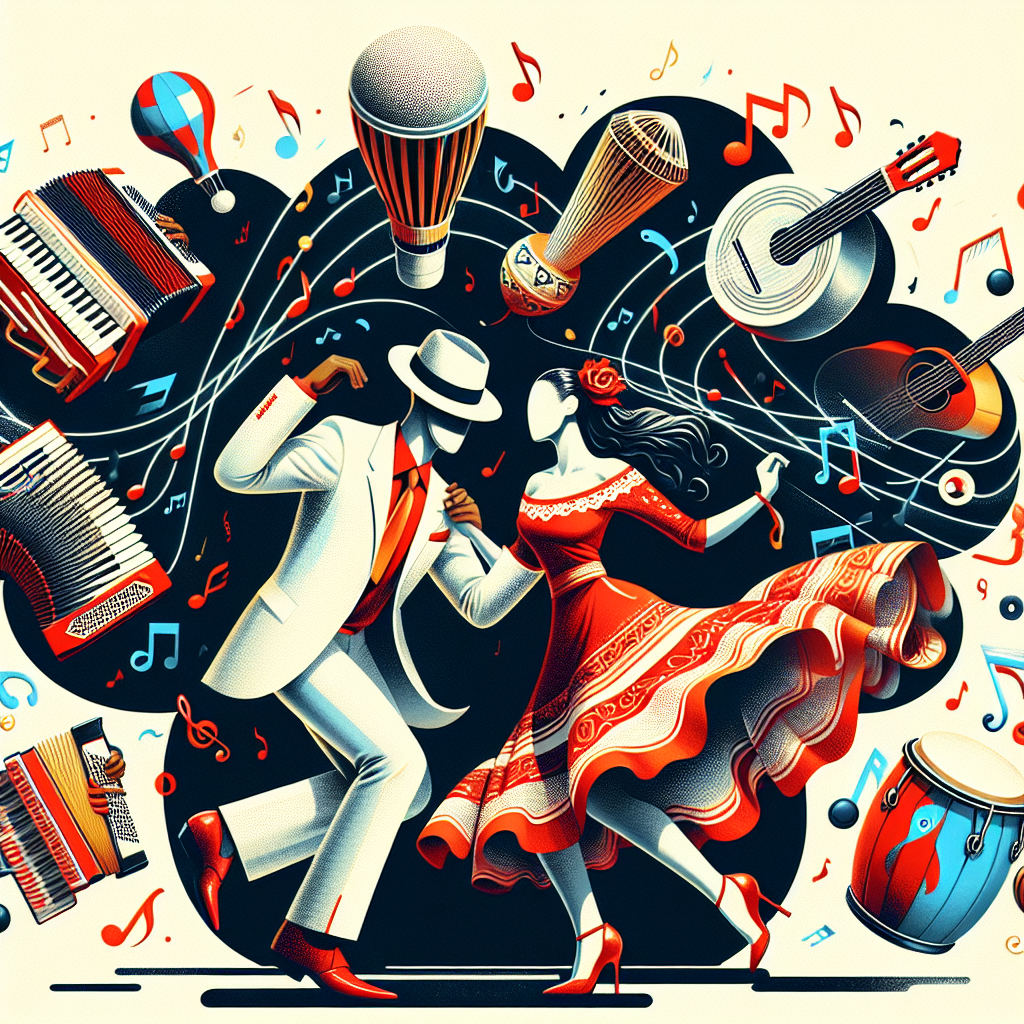Exploring the Vibrant Rhythms of Cumbia: A Latin Music Genre
The world of Latin music is a vast tapestry woven with numerous styles, rhythms, and influences. From Salsa to Merengue, Bachata to Reggaeton, the diversity within this musical culture is truly stunning. In this discussion, our focus will be narrowed onto an undeniably vibrant part of this spectrum – Cumbia.
The Origin of Cumbia
Cumbia is a musical genre that originated in Colombia’s Caribbean coastal region and Panama during the colonial period. Its roots can be traced back to the intermingling of Indigenous, African, and Spanish cultures. The music and dance style was initiated as a courtship ritual among the African slave population and later morphed into a popular form of expression and celebration.
Instrumentation in Cumbia
The instrumentation primarily involved in traditional Cumbia music includes the tambora (a type of drum), maracas, guacharaca (a cane tube adorned with jawbones), caja vallenata (a box drum), and accordion. The rhythmic elements provided by the percussion instruments, combined with melodies from the accordion and vocals, give birth to the rich vibrance of Cumbia.
Cumbia Today
Over time, Cumbia has spread across Latin America and has since undergone many variations and transformations. From Puerto Rico to Argentina, this genre now exists in a variety of local adaptations and continues to gain global recognition. Many Latin pop and rock artists incorporate Cumbia rhythms into their music, contributing to its ongoing evolution and popularity.
Characteristics of Cumbia Music
Cumbia is specifically known for its infectious rhythm and simple 2/4 beat. This syncopated beat drives the music and lends itself highly to dance. On top of this rhythmic base lays the melodic component, often comprised of repetitive, catchy sequences. The lyrics usually tell stories about life, love, passion, and struggle and are often infused with humour and wit.
In terms of dance, Cumbia historically embodied a flirtatious courtship ritual with slow-paced movements. Today, it’s characterized by quick footwork matched with flowing, circular movements of the upper body and broad hip swings, keeping the dancers connected with the music’s kinetic energy.
The Influence of Cumbia
Cumbia isn’t just a genre of music and dance; it’s an integral part of Latin culture. It functions as a symbol of resilience and unity, transcending social barriers and fostering communal cohesion. Many music festivals dedicated to this genre are held yearly in Latin countries, showcasing the variety within the genre while honouring its roots.
Conclusion
To appreciate Cumbia is to embrace the soul of Latin America. From its humble beginnings to its current widespread popularity, this dynamic and exuberant genre encapsulates the vibrant spirit of Latin culture. Whether you’re moved by the rhythm, inspired by the dance, or drawn by its historical significance and cultural implications, the essence of Cumbia is undeniable. Indeed, exploring the vibrant rhythms of Cumbia takes us on a journey through the heart of Latin music and dance.
Frequently Asked Questions (FAQs)
1. What is the origin of Cumbia music?
Cumbia originated in Colombia’s Caribbean coastal region and Panama during the colonial period amongst the African slave population.
2. What are the typical instruments used in Cumbia music?
Typically, Cumbia uses the tambora, maracas, guacharaca, caja vallenata, and accordion.
3. What is the signature beat of Cumbia music?
Cumbia is known for its simple 2/4 beat accompanied by a syncopated rhythm.
4. How has Cumbia music evolved over time?
Initially a courtship ritual, Cumbia has evolved into a popular genre of music and dance across Latin America with various adaptations and influences from contemporary Latin music genres.
5. What is the importance of Cumbia in Latin culture?
Cumbia is considered an integral part of Latin culture. It stands as a symbol of resilience and unity, transcending social barriers and fostering communal cohesion.




